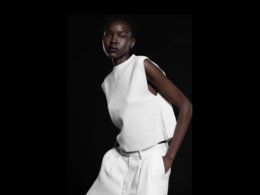The cashmere material is widely known as one of the most luxurious and precious fabrics in the world. Soft, lightweight, and exquisitely warm clothing such as luxurious scarves and cosy sweaters made from cashmere fabric is often associated with high-end fashion houses. However, what is not widely known is that the true origin of cashmere lies thousands of miles away from the runways of Paris or Milan. This article will explore the origin of cashmere fabric.
Origin of the Cashmere Material
The roots of cashmere can be traced back to Mongolia. Core to the production of the cashmere fabric are the Mongolian indigenous goats, specifically the noble Capra hircus, commonly known as the Cashmere goat. These hardy creatures are known for their remarkably soft, thick, downy, and insulating undercoat, which helps them endure the harsh winters of Mongolia. Honestly, this breed of goat thrives better in cold and dry regions. Hence, the -45° winter weather in Mongolia is perfect for them.

Cashmere or Kashmir?
Cashmere is widely known as the material, while Kashmir is a province where cashmere goats have also been historically found. Since the 17th century, the cashmere spelling has been used to describe the goats and fibre they produce, while the Kashmir spelling has remained the name of the province.
How Does Cashmere Go From Mere Goat Fleece to Yarn?
To get the cashmere material to the stage for further production, the goat’s undercoat must be de-haired (a mechanical process that separates the coarse hair from the fine hair). This process involves the guard’s hair being painstakingly combed or sheared from under the goat’s chin during the spring moulting season.
Once harvested, the raw cashmere fibre undergoes a series of meticulous sorting, cleaning, and spinning processes to transform it into the luxurious fabric we know and love. Mongolian artisans take great pride in their craftsmanship and meticulously hand-spin the fibre into yarn before it is woven into other clothing materials.
After this process, the produced cashmere is ready to be dyed and turned into end products such as textile yarn, fabrics, and garments. The remaining long, coarse hair is usually clipped from the goats and is often used for brushes. Learn the 3 Rules for Choosing the Perfect Cashmere Sweater.
Mongolian herders have been practicing the art of cashmere harvesting for centuries, passing down their knowledge and skills from generation to generation. The process is labour-intensive and requires a delicate touch to ensure that the precious fibers are harvested without causing harm to the goats.
Other Interesting Facts About the Cashmere Goat or Fabric:
- With the cashmere goat beginning to inhabit other areas, these types of goats can only be found in 12 countries around the world, including China, Afghanistan, Australia, and New Zealand.
- It takes a single goat one year to produce enough cashmere to make a scarf.
- Cashmere is eight times warmer than the wool from sheep.
- An average Mongolian herder owns about 100 goats.











